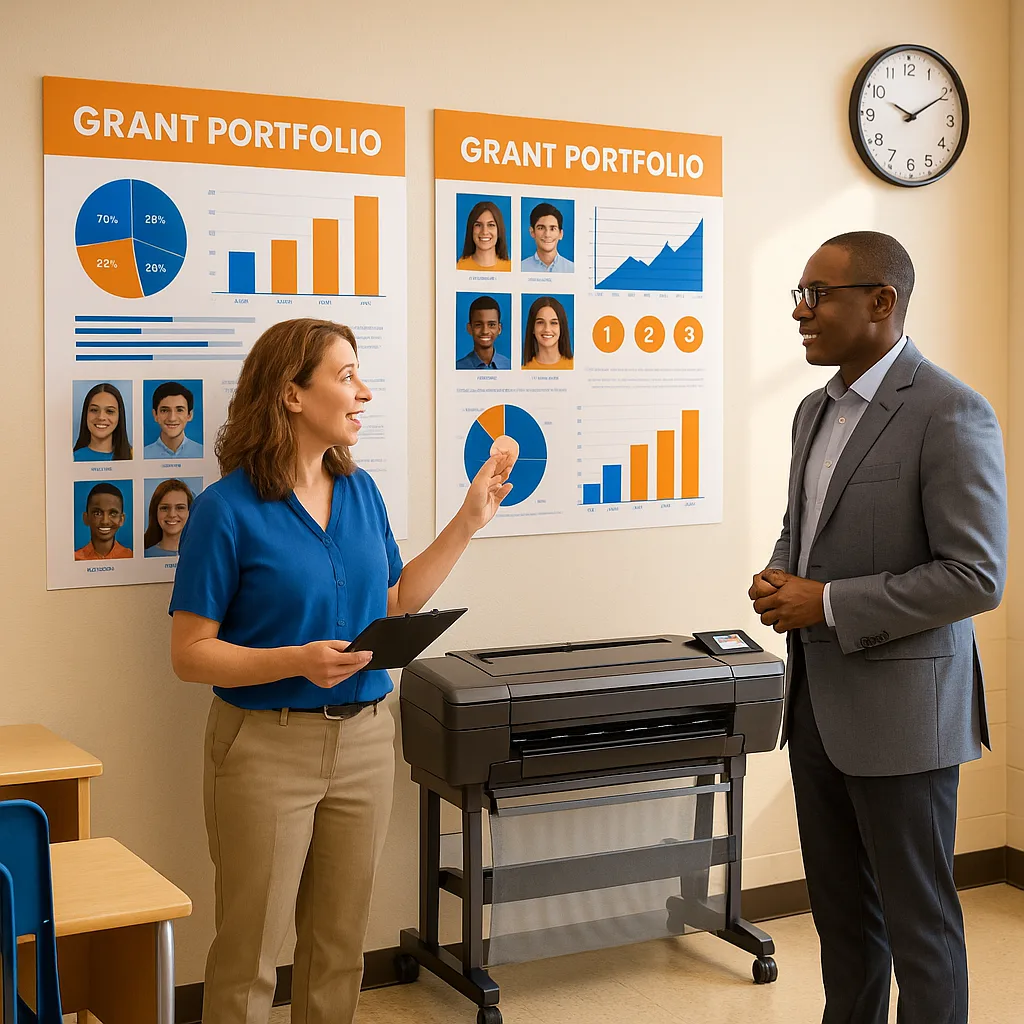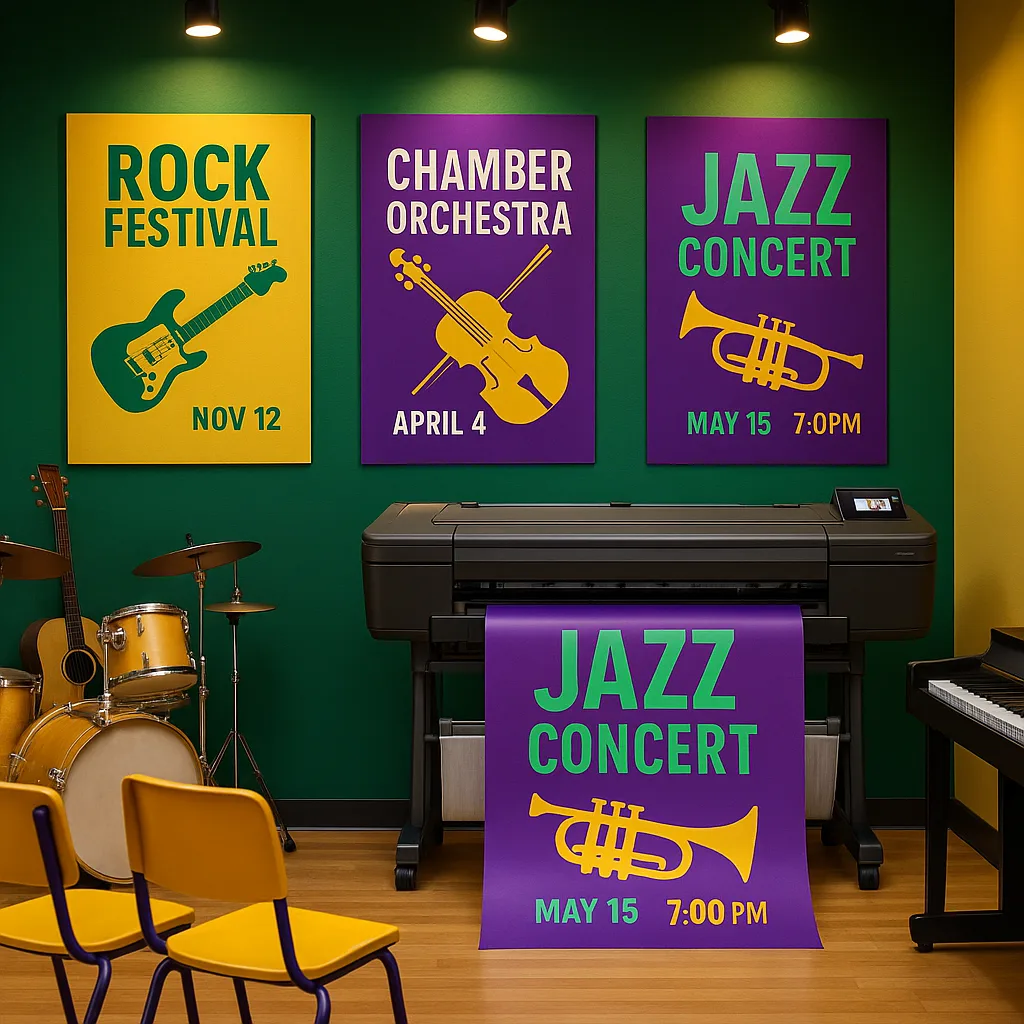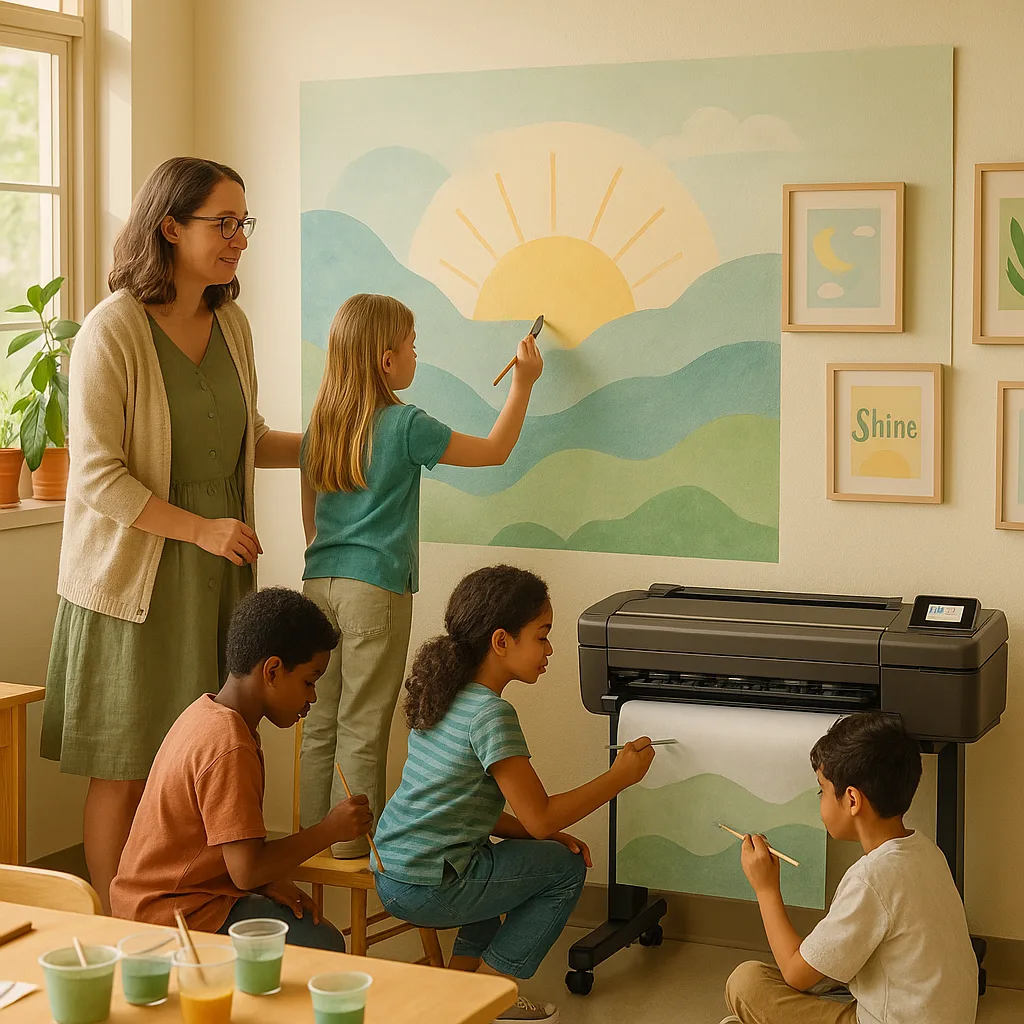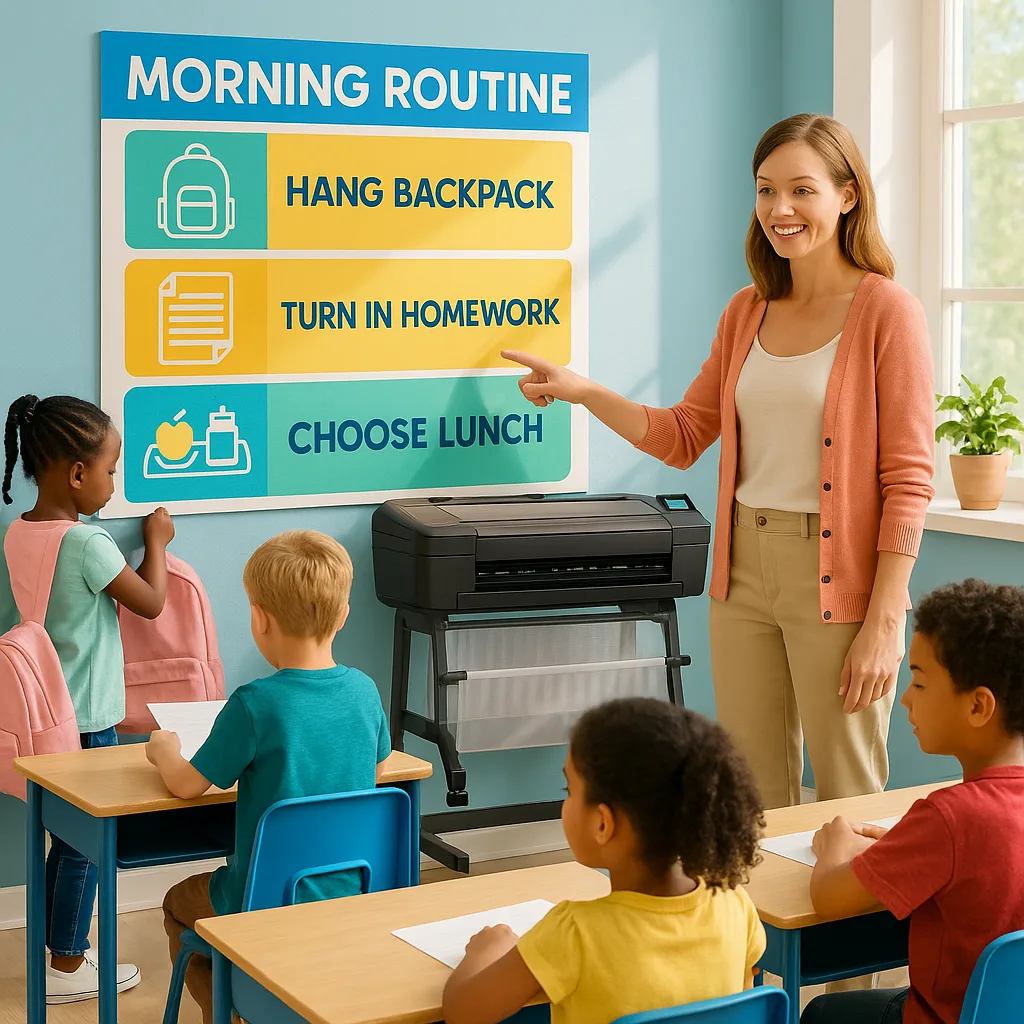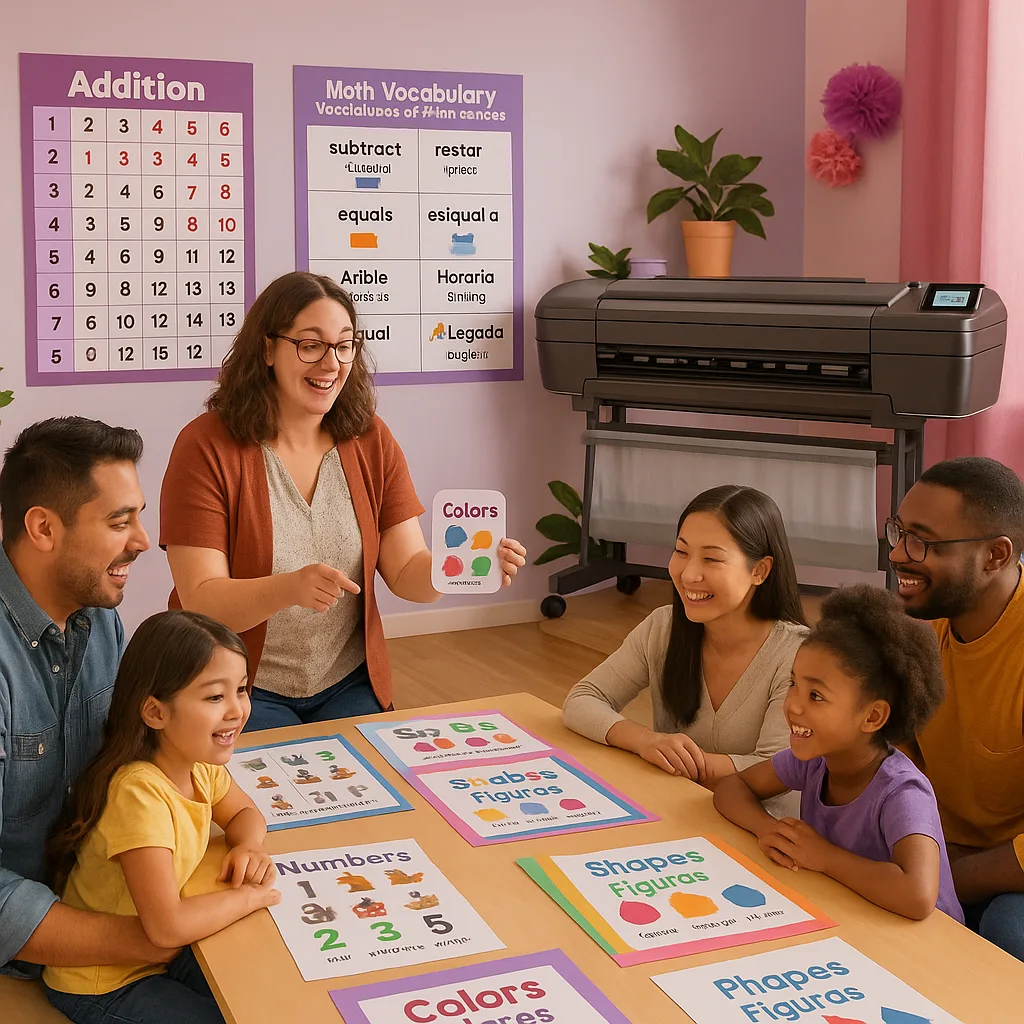
Have you ever watched a student’s face light up when their artwork gets displayed? Now imagine that same joy multiplied when we ensure every single student—regardless of physical ability—sees their creations celebrated on our classroom walls. Creating inclusive art displays isn’t just about fairness; it’s about recognizing that creativity knows no bounds. With poster maker machines adaptive displays, we can transform how we showcase student work, making sure every artist in our classroom feels valued and seen.

Why Adaptive Art Displays Transform Classroom Culture
Let me share something that changed my perspective forever. Last year, Maya, a student with cerebral palsy, created a stunning abstract piece using adaptive brushes. However, the traditional display board was too high for her to reach. When we installed adjustable display panels and used our Education Express 24″ Poster Maker Package A to create large-format prints of her work at various heights, something magical happened. Not only could Maya interact with her displayed art, but other students began creating collaborative pieces specifically designed to be accessible to all.
Furthermore, adaptive displays send a powerful message: every artist matters. Research from the National Art Education Association shows that inclusive art programs boost self-esteem by 73% in students with disabilities. By investing in proper display solutions, we’re not just hanging art—we’re building confidence, fostering belonging, and teaching empathy through action.
Essential Adaptive Display Solutions
Adjustable Height Systems
Creating truly inclusive displays starts with flexibility. Install track systems that allow artwork to be positioned at wheelchair height (typically 36-48 inches from the floor). Moreover, use sliding panels that students can adjust independently. I’ve found that combining traditional corkboards with magnetic strips at various heights gives us maximum versatility.
Additionally, consider rotating display areas. Some students may need their work displayed at eye level while seated, while others benefit from angled displays that reduce glare. The key is creating multiple zones within your display system.
Digital-to-Print Workflows
Technology becomes our greatest ally when creating accessible displays. Students who create digital art using adaptive tools can see their work transformed into gallery-quality prints. The Education Studio 36″ Duplicator Poster Maker Package A+ enables us to reproduce artwork at any size, ensuring visibility from various distances and angles.
Subsequently, we can create QR codes linking to audio descriptions of the artwork, making displays accessible to students with visual impairments too. This multi-sensory approach enriches the experience for everyone.
Collaborative Art Projects That Include Everyone
True inclusion happens when students work together, each contributing their unique abilities to create something beautiful.
of students report feeling more included through collaborative art projects
increase in peer interaction during inclusive art activities
of teachers see improved classroom community
Poster Maker Machines Adaptive Displays: Practical Implementation
Let’s dive into the practical steps for setting up your inclusive display system. First, assess your current space with fresh eyes—or better yet, invite students with various abilities to give feedback. They’ll notice barriers you might miss.
Next, create zones within your display area. I recommend:
• Low Zone (24-36 inches): Perfect for students using wheelchairs or those who prefer seated viewing
• Mid Zone (36-54 inches): Standard height accessible to most students
• High Zone (54-72 inches): For larger collaborative pieces or distant viewing
• Digital Zone: Tablets or screens displaying rotating student work
When considering poster machine price for your inclusive display system, remember you’re investing in equity. The cost per print becomes negligible when you see how professional reproductions of student work boost confidence and participation.
Technology Tools That Make Inclusion Easy
Modern poster maker machines have revolutionized how we create accessible displays. For instance, the drag-and-drop functionality allows students using adaptive devices to design directly in Canva, then print their creations instantly. Watch how simple it is in this demonstration video.
Additionally, consider these adaptive technologies:
• Voice-activated design commands for students with limited mobility
• High-contrast printing options for students with visual processing differences
• Texture-printing capabilities (using specialty papers) for tactile learners
• Adjustable print sizes from 8.5″ × 11″ up to poster-size for various display needs
The beauty of modern poster printer systems lies in their flexibility. Students can create art on their preferred device—tablet, adapted computer, or smartphone—then seamlessly transfer their work to large-format prints that everyone can appreciate.
Creating Your Inclusive Gallery Space
Transform your classroom into a celebration of diverse artistic expression with these proven strategies.
Step 1
Evaluate SpaceAssessment
Map current barriers and opportunities in your display areas. Include students in this process!Step 2
Plan ZonesDesign
Create multi-level display zones with clear pathways and interaction spaces.Step 3
Install ToolsEquipment
Set up adjustable displays and position poster maker machines for easy access.Step 4
Launch GalleryCelebrate
Host an inclusive art show where every student can proudly share their work!Budget-Friendly Solutions and Funding Options
I understand that budget concerns often hold us back from creating fully inclusive spaces. However, when you calculate the long-term value and consider various funding sources, adaptive display solutions become surprisingly achievable. The poster machine price might seem daunting initially, but let me share how schools are making it work.
First, explore Title I funding specifically allocated for inclusive education resources. Many schools have successfully used these funds to purchase poster maker machines, arguing that equitable display options directly support academic achievement for all students. The customer stories page showcases schools that secured funding through creative grant writing.
Furthermore, consider starting small. Begin with one adjustable display wall and a basic poster printing setup. As you document the positive impact—increased student engagement, improved self-esteem, better parent involvement—you’ll build a compelling case for expanded funding. Many PTAs enthusiastically support initiatives that visibly celebrate every student’s achievements.
Don’t overlook community partnerships either. Local businesses often sponsor inclusive education projects, especially when they can see tangible results like a public art display featuring work from students of all abilities. I’ve seen Rotary Clubs, Lions Clubs, and chamber of commerce groups eagerly fund poster maker machines when they understand the equity impact.
Success Stories That Inspire Action
Let me share a heartwarming example from Lincoln Elementary. They invested in poster maker machines specifically to support their inclusive art program. Maria, a student with muscular dystrophy, creates digital paintings using eye-tracking software. Previously, her work remained trapped on a computer screen. Now, her vibrant creations are printed in large format and displayed at her eye level throughout the school.
The ripple effect was remarkable. Other students began collaborating with Maria, learning about adaptive technology while creating joint artworks. Parents reported that Maria’s confidence soared—she even started teaching digital art techniques to her peers during lunch. The principal noted a 40% increase in art program participation after implementing inclusive display practices.
Another inspiring case comes from Jefferson Middle School, where they created “Art Ambassadors”—student teams responsible for ensuring all artwork gets equitably displayed. These teams include students with and without disabilities, working together to install art at various heights and formats. They use their Education Express 24 Desktop Poster Printer to create information cards in multiple formats—large print, Braille (through partnerships), and QR codes linking to audio descriptions.
Your Next Steps Toward Inclusive Excellence
Creating truly inclusive art displays isn’t just about meeting compliance standards—it’s about celebrating every student’s creative voice. When we ensure all students can both create and interact with displayed artwork, we build stronger, more empathetic classroom communities. The investment in poster maker machines and adaptive display systems pays dividends in student confidence, peer relationships, and overall classroom culture.
Learn more about creating equitable classroom displays with our lifetime design service that helps you create accessible materials for all students.


